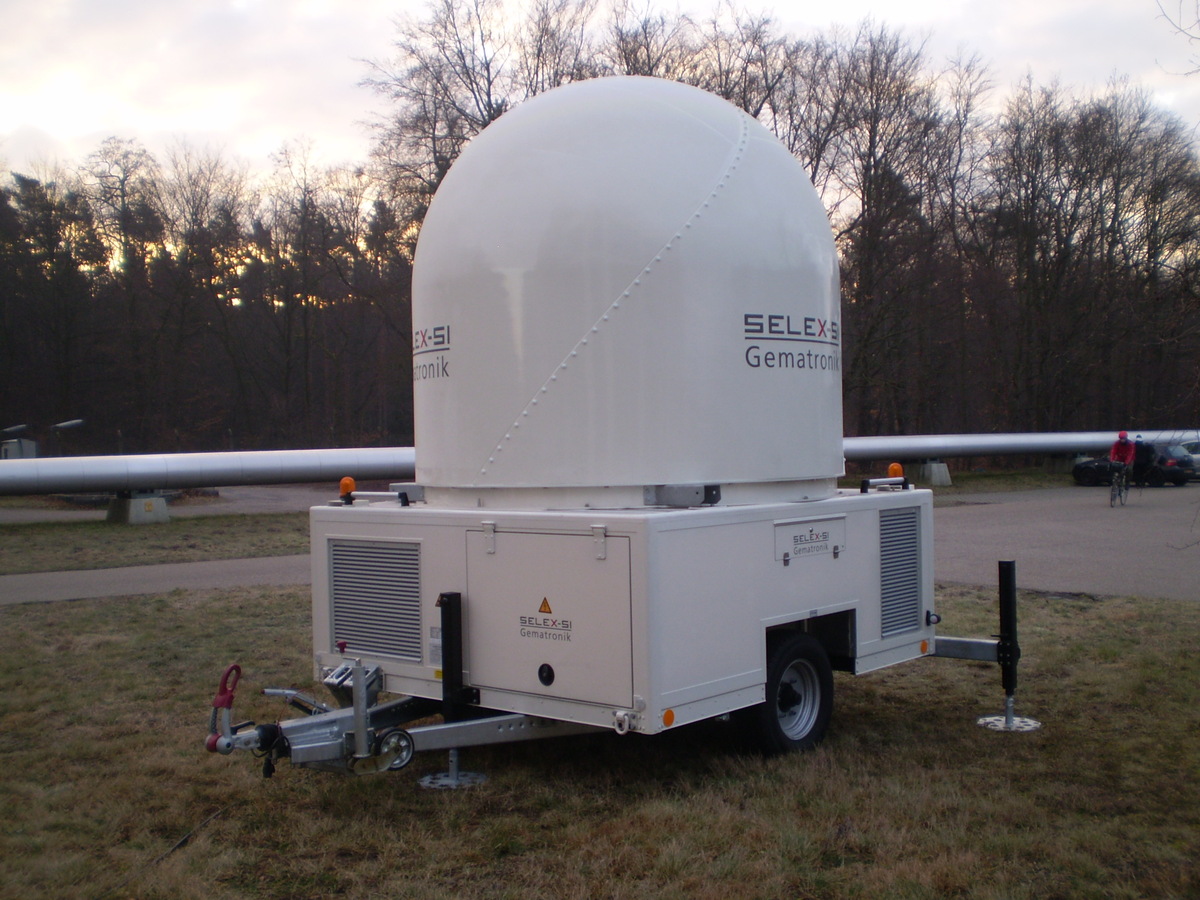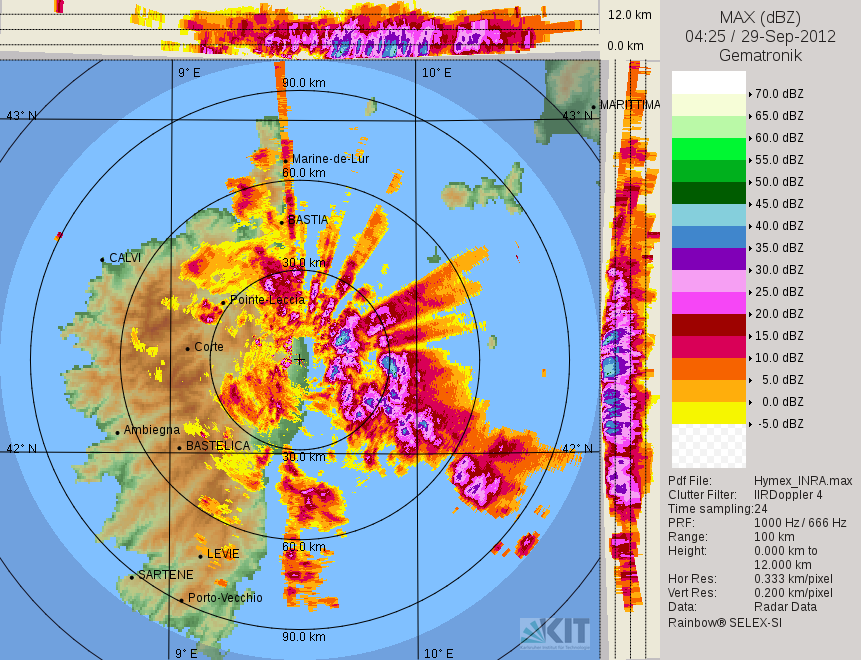X-band Doppler radar
The X-band precipitation radar Meteor50DX is mounted on a trailer and is, therefore, mobile (Fig. 1). It is able to measure the Doppler velocity of scatterers as well as to evaluate both polarization layers (horizontal and vertical). The radar emits on both layers at the same time (45° angle effectively) and receives both channels separately.
To avoid abnormal load transportation, the radar parameters are a trade-off. The radar works in the x-band, at a wavelength of 3 cm. The fulfillment of the Rayleigh condition (scatterers are much smaller than the wavelegth) is already violated for large drops, also for snowflakes and hailstones. The diameter of the antenna is limited by the maximum permissible width of the vehicle. Hence, the radar beam is really broad with an angle of 1.35°. Another limitation compared to C-band radars is an increased damping of the radiation, particularly in precipitation.
The big advantage of the radar is its flexibility. It can be operated from sites that are not or unsatisfactory covered by operational radars. In addition to the reflectivity, the X-band radar delivers also the radial velocity and polarimetric quantities like differential reflectivity, (specific) differential phase, and correlation coefficients between horizontal and vertical polarization.


